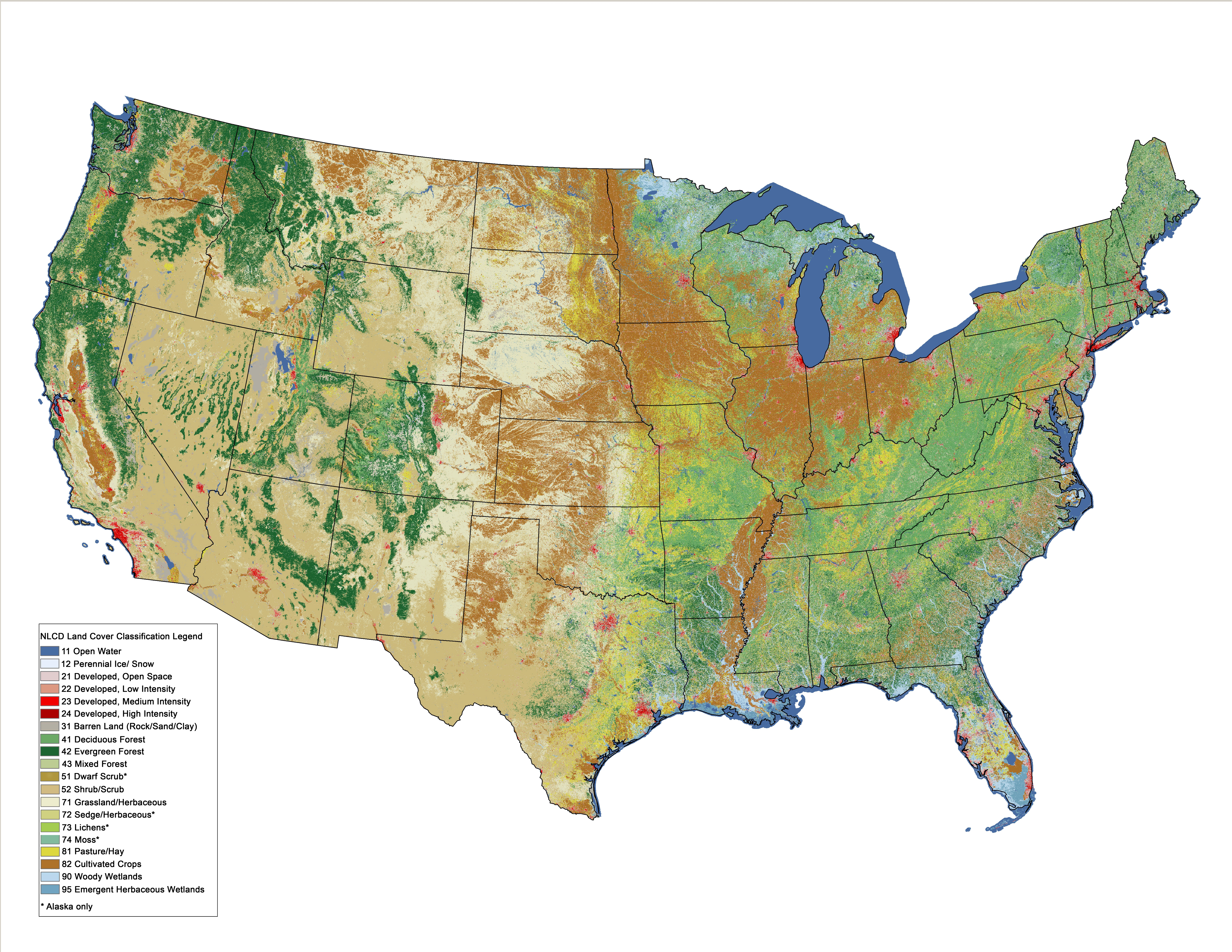Continuous Raster Data Examples
Raster data is a representation of images in rows and columns of pixel format and it is a continuous data representation. The continuous surface representation of a raster dataset represents some measure such as the height concentration or magnitude for example elevation acidity or noise level.

Introduction To Raster Data Introduction To Geospatial Concepts
Intro to Point Cloud Layer.

. Satellite images photogrammetry and scanned maps are all types of raster-based Earth Observation EO data. Generally cells are assigned a. 112 Continuous colour scales.
The plots in this section use the surface of a 2d density estimate of the faithful dataset 36 which records the waiting time between eruptions and during each eruption for the Old Faithful geyser in Yellowstone Park. Surface interpolation tools make predictions from sample measurements for all locations in an output raster dataset whether or not a measurement has been taken at the location. Dynamic data layer with raster data.
The continuous surface representation of a raster dataset represents some measure such as the height concentration or magnitude for example elevation acidity or noise level. VCF products provide a continuous quantitative portrayal of land surface cover at 250 meter m pixel. Visit Readers and Writers to list data formats it supports and see Filters for filtering operations that you can.
Raster data consists of pixels. PDAL is a C library for translating and manipulating point cloud dataIt is very much like the GDAL library which handles raster and vector data. The scales toolbox in Chapters 10 to 12 provides extensive guidance for how to work with scales focusing on solving common data visualisation problems.
Each pixel has an associated value. In the GIS world there are two primary data formats one is a vector and another one is raster data formats. Note that using gsn_csm_contour results in the raster bins at the edges being reduced to half width.
This is the first time I use R. The practical goals of the toolbox mean that topics are introduced when they are most relevant. Your browser does not support JavaScript.
Oil depth across an open-water oil spill soil pH reflectance in a certain band in the electromagnetic spectrum elevation landform aspect compass bearing of steepest downward descent salinity of a water body Here is a diagrammatic model of how raster datasets represent real-world features. I hide the legends and set expand to 0 to focus on the appearance. Im looking for a way to insert continuous colour legend for a raster layer.
These clearly show the bin and data resolution. The distinction must be made between a singular geographic information system which is a single installation of software and data for a particular use along with associated hardware staff and institutions eg the GIS for a particular city government. The spatial raster data model represents the world with the continuous grid of cells often also called pixels.
What is Raster Data. A grid of cells represents this data. Vector data is the representation of spatial features in points lines polygon formats and it is a discrete data representation.
For example scale transformations are discussed in relation to continuous position scales Section 1017. The MOD44B Version 6 Vegetation Continuous Fields VCF yearly product is a global representation of surface vegetation cover as gradations of three ground cover components. Chemical concentrations and elevation surface are some examples of raster data.
Surface interpolation tools make predictions from sample measurements for all locations in an output raster dataset whether or not a measurement has been taken at the location. In computer graphics and digital photography a raster graphic represents a two-dimensional picture as a rectangular matrix or grid of square pixels viewable via a computer display paper or other display mediumA raster is technically characterized by the width and height of the image in pixels and by the number of bits per pixelRaster images are stored in image files with varying. There is actually more data than shown.
Colour gradients are often used to show the height of a 2d surface. I am trying to plot a bar chart for the data frame below. Some examples of continuous data are.
Raster data is. This data model often refers to so-called regular grids in which each cell has the same constant size. Is there a way to plot a bar chart for this data frame using ggplot with x.
Change point size and density. In other words it is a matrix of cells organized into rows and columns. I managed to create discrete symbols with values along the bar but I would like to have a continuous bar with some values on the bar similar to the old plugin One-Band Raster that it doesnt work with the QGIS version higher than 17.
The collection period ran from Jul0121 to Nov3021. Variables that may not be continuous probabilities00 may be best viewed via use of raster plots. The examples which follow are generally oriented around a NYC taxi pickup dropoff dataset found here.
PDAL - Point Data Abstraction Library. Vector Tile Layer from JSON. The About page provides high level overview of the library and its philosophy.
Percent tree cover percent non-tree cover and percent non-vegetated bare. Filter points in a Point Cloud Layer. And GIS software a general-purpose application program that is intended to be used in many individual geographic.
15 Scales and guides. Each cell has a value that represents information. Raster data stores information of features in a matrix of cells or pixels organized into rows and columns either discrete or continuous.

Introduction To Raster Data Introduction To Geospatial Concepts

What Is Raster Data Help Documentation

Introduction To Raster Data Introduction To Geospatial Concepts

Introduction To Raster Data Introduction To Geospatial Concepts
No comments for "Continuous Raster Data Examples"
Post a Comment